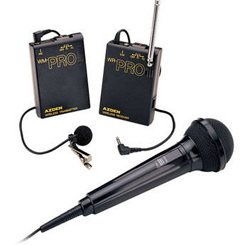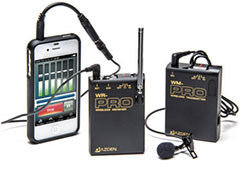The kind of equipment we use to produce audio will always depend on many factors. Factors such budget and space are major concerns, especially if you are working in a home studio. But regardless of what kind of audio you produce, you should have some way to monitor/listen to what you have recorded. Here are some tips for choosing the right monitor for your studio.
Now remember not all home studios are the same, and here are some issues you might want to consider before making any move. There are acoustic problems, noise issues, and of course your actual space. These will determine what you need to have in your set-up. For example, a sub-woofer speaker in a small room could hamper what you actually hear.
You can read more tips and advice here: http://www.mixdownmag.com.au/low-frequency-control-your-home-studio
Recording Tips and Techniques
Add Air To Brighten Up Your Mix
Just like breathing adding a little air while mixing your drum and percussion section can actually brighten up your mix. Here are few tips how you can mix it up with a little bit of air and actually improve your mix.
Use your EQ, simply boost your highs to the brightness you desire to achieve for your project this is the simplest and less complex way to brighten up your percussion section. A short delay using your EQ is another way you can add air to your mix without adding clutter to your percussion. Remember you want it brighter.
For more tips http://www.audio-issues.com/music-mixing/3-ways-to-add-air-to-your-mix/
Audio For Videos: Do Not Let Bad Sound Ruin Great Video
 The audio for videos, especially the videos produced in a home studio, always seems to take a back seat to the visual aspects involved in the project. I can see why this might be. They are, after all, called “videos,” which seems to imply that sound is less important. But boy is that a mistake! Nothing says “amateur” to me faster than crappy, echo-y, thin voice audio on a video, no matter how good it looks. I’m betting I’m not alone in this. So the question is: why would you go to all the trouble to make a video look good if you were just going to ruin it with crap audio?
The audio for videos, especially the videos produced in a home studio, always seems to take a back seat to the visual aspects involved in the project. I can see why this might be. They are, after all, called “videos,” which seems to imply that sound is less important. But boy is that a mistake! Nothing says “amateur” to me faster than crappy, echo-y, thin voice audio on a video, no matter how good it looks. I’m betting I’m not alone in this. So the question is: why would you go to all the trouble to make a video look good if you were just going to ruin it with crap audio?

I could guess. Maybe it’s because folks don’t understand how to GET good-sounding audio on a PC recording studio. Maybe they think it isn’t important. It’s possible they believe that it requires an expensive studio or high-end costly gear to achieve professional audio. I don’t know.
What I CAN tell you though, is that sound quality can be pushed into the professional level of quality without lots of expensive gear and without having to go to a commercial studio. The truth is that it’s more about knowledge than gear. It is very possible to make terrible recordings with expensive gear. I have both done it and seen it done many times.
But it is also possible to make great sounding recordings with really cheap gear if you know what you’re doing. And guess what? You don’t have to be a recording engineer to know what you’re doing. There are some basic audio principles, along with some tips and tricks anyone can use with cheap gear, that will allow anyone with a computer and half a brain to bring the good stuff when it comes to audio for videos.
One of the main ways to get that improved audio is to use a lapel (or lavalier mic), such as the Azden WMS-Pro, which costs only $159.00. [update: There is now also a version of the WMS pro that plugs into smartphones and tablets as well! That one is the Azden WLX-PRO+i VHF Wireless Lavalier Microphone System for Cameras & Mobile Devices.
Here’s a video demonstration I did using this microphone:
The reason I mention a computer is that computers have allowed mere mortals (as opposed to tech-savvy electrical engineers or physicists with audio and acoustics engineering degrees) to record and produce high quality audio with cheap gear and modest knowledge.

The next statement I’m going to make is going to be considered heretical to some purists. Are you ready? You don’t truly need to know that much about acoustics and audio in order to make excellent audio. It’s true. As long as you follow a few rules and understand just a couple of easy ideas, the computer age makes the rest possible and affordable. Now, before some of you pick up your rocks and take aim, know that I am not saying it isn’t better to have more knowledge about audio. But for too long regular people have been made to feel that unless they took special classes or just spent a freakish amount of time tinkering with electronics, they had to rely on the professionals if they wanted great audio. The only alternative, folks were led to believe, was to go out and buy very expensive equipment and software and, of course, then learn how to use all that stuff. Unless you were rich AND had too much time on your hands, that dog wasn’t going to hunt.
Well forget all that stuff! Home Brew Audio is here to provide all you regular people out there with the knowledge and resources you need to start recording and creating professional quality music, voice overs, loops, and sound effects with stuff you probably already own or can download for free. And we can get you started in the next 30 minutes. There really is no need to undercut the effectiveness of your videos, whether you’re making sales videos, music videos or movies. When bad sound can completely tank the best looking video, and when good sound can be had cheaply and quickly, there isn’t really any excuse for crappy audio anymore. Come on by when you’re ready to get started, and we’ll help you make better videos by making better audio quality for them.
Parallel Mixing with Andrew Scheps
Home based studio recording? You might think its impossible to record truly pro audio at home unless you have the best equipment available. Well it’s certainly not our opinion. Just check out some of the recordings Ken has made in his converted bedroom studio and hopefully you will agree it is VERY possible to record pro audio at home.
It’s also clearly not impossible for sound engineer Andrew Scheps. One of the top mixers in the world with Adele and Justin Timberlake under his name just mentioning a few. He mixes from his home in England using a single pair of monitors and a non-treated home studio. You think right?
One of the first practitioners of the art of parallel processing discusses how this practice has enabled him to move in a small space with very few equipment but still come up with good quality sound
Read more here: http://en.audiofanzine.com/sound-technique/editorial/articles/mixing-in-parallel-part-1.html
Master Your Mixes at Home
Working on a budget? No worries you can still produce that professional sounding mix that can turn things around for you. Here are a few tips on how to produce louder and clearer mixes from your own home.
Mastering is a scary word, and most of us think that it is just for professionals. Thanks to modern plugins and software it can now be available in your own home without giving up high-quality standards, using the equipment you already have.
Understand that mastering is not just processing the final stereo file after your mix. It is actually more than that.
Read more here: http://music.tutsplus.com/tutorials/home-mastering-101-how-to-make-your-mixes-louder-clearer-and-punchier–cms-26916